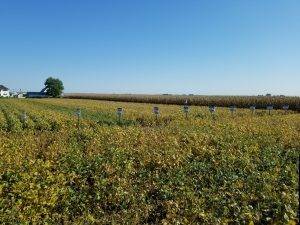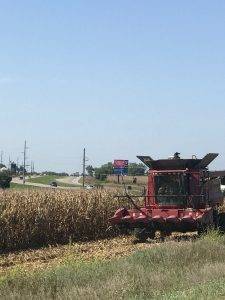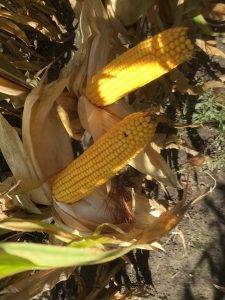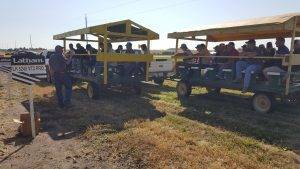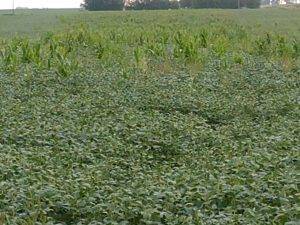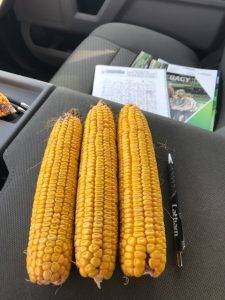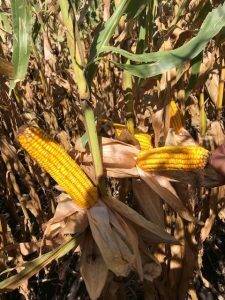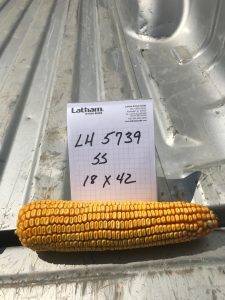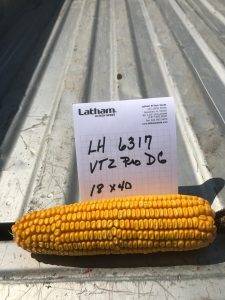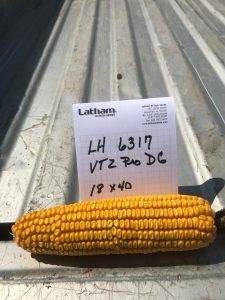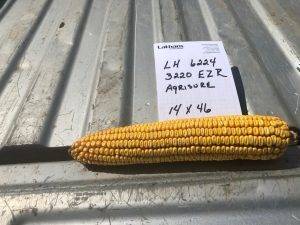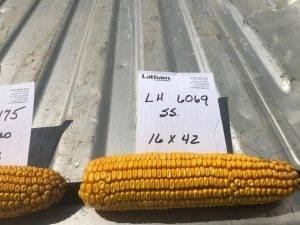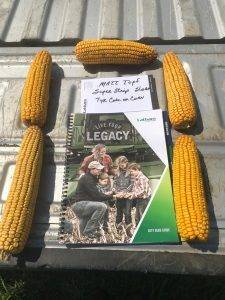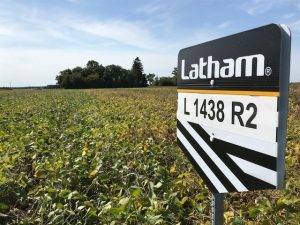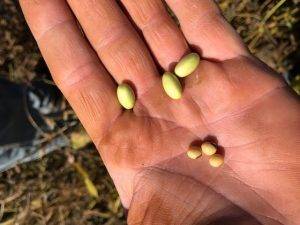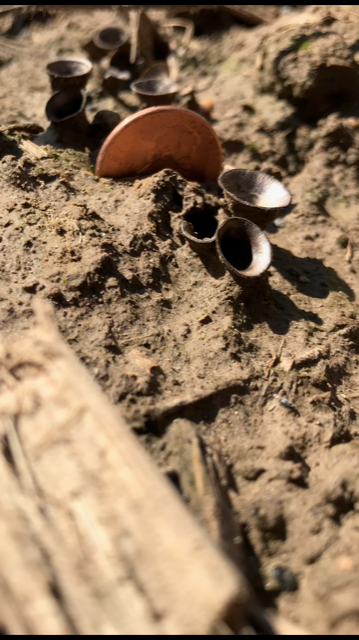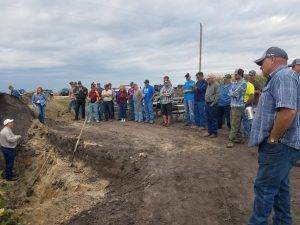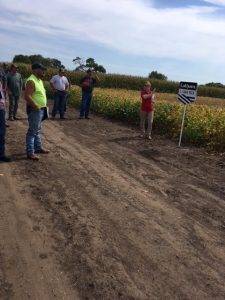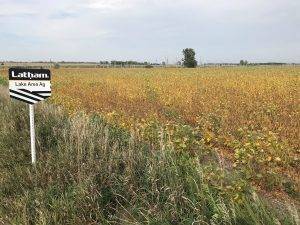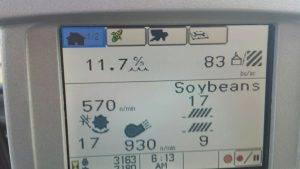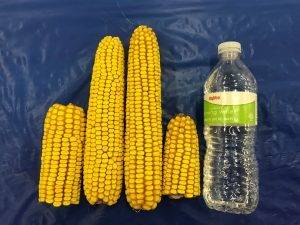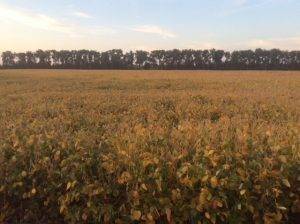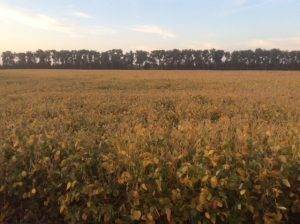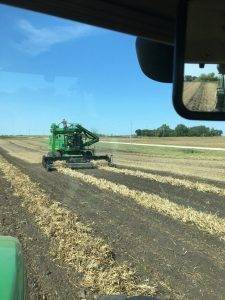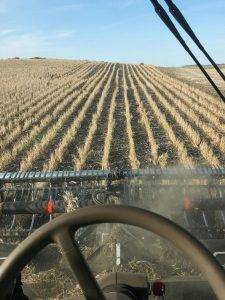From the Field Crop Reports 9/12/18
EASTERN IOWA
Jerry Broders
Fall is in the air! Both corn and soybeans are starting to turn and combines will be rolling before we know it in Eastern Iowa.
CENTRAL IOWA
Bryan Rohe
Harvest has just begun in Pella, Oskaloosa, Prairie City and near State Center. Stay tuned for yield results soon!
NORTHEAST IOWA & SOUTHEAST MINNESOTA
Craig Haaland
Here is some of our LH 5505 VT2 PRO RIB in Cerro Gordo County. Temperatures will be around 80 degrees with sunshine this week, I’m sure we’ll see the corn and soybean crops really change by the weekend. Combines will start rolling by next week in certain areas.
WEST NORTH CENTRAL IOWA
Bart Peterson
This photo was taken on Sept. 11 at a plot day hosted by North Central Cooperative of Clarion and Kanawha. It was a good day talking about all of the great Latham® products in our current lineup and what products are coming down the pipeline.
NORTH CENTRAL IOWA & SOUTH CENTRAL MINNESOTA
Cory Greiman
These photos taken near Klemme, Iowa, show how a cereal rye cover crop helps suppress volunteer corn and weeds following hail-damaged corn. The area with the volunteer corn in the soybeans is where they ran out of cereal rye seed and they left test strips.
NORTHWEST IOWA
Darin Chapman
We’re two to three weeks from starting harvest in Northwest Iowa. Yields will be variable due to all the weather events we have experienced this year. The LH 5245 VT2 PRO RIB in the photo was planted on May 7 at 36,000 population. By the appearance, we should be happy with this one!
WESTERN IOWA & EASTERN NEBRASKA
Larry Krapfl
SOUTHERN WISCONSIN
Greg Mair
Latham Hi-Tech Seeds’ NEW SmartStax hybrid LH 5819 SS RIB is holding its own with significant tar spot infestations in the area. This Latham® SuperStrip should give us excellent data regarding performance and disease resistance for 2019 planning.
The first Latham field will be harvested for grain on Friday afternoon. Moisture was tested Sept. 11 at 21% and 25%.
Stay safe and happy harvesting!
NORTHERN WISCONSIN
Joey Salter
Soybeans are turning and leaves dropping, indicating that harvest is quickly approaching. These photos below show white mold has taken its toll, but L 1438 R2 did not give in. Also pictured is L 1438 R2 to compare the soybean size to an experimental that did not withstand the white mold pressure. The last photo is white mold spores In the same field.
NOTE: Paying close attention to white mold scores will be key to preserving yield here in the future. The best offense will be planting a defensive IRONCLAD brand, available exclusively from Latham Hi-Tech Seeds.
NORTHERN MINNESOTA
Ken Highness
Root dig on corn health in Beltrami, Minnesota.
SOUTHEAST SOUTH DAKOTA
Ramie Coughlin
This week Estelline Co-op Grain hosted its annual plot day to showcase the best of Latham® seeds. What a great turn out!
We are experiencing temps in the upper 80’s with 15-mph winds, so crop conditions are changing quickly. Most farmers here will be harvesting in two weeks or less.
NORTHEAST SOUTH DAKOTA
James Keltgen
Latham® L 0982 R2’s are turning quickly near Watertown. Harvest could begin next week here.
L 0982 R2’s are being harvested near Frankfort, SD. This particular field was planted on a bio-strip cover crop, and our customer will be a strong contender in the South Dakota Soybean Association yield contest with this variety!
LH 4657 VT2 PRO RIB looks to yield well in a drought-stressed field southeast of Huron.
SOUTHEAST NORTH DAKOTA
Gary Geske
This week we’re conducting our second round of field inspections for seed production. Latham soybeans are looking outstanding!
EASTERN NORTH DAKOTA
Brian McNamee
Soybean harvest is underway across the area. Edibles are average to slightly above average. With a good contract price, it will equal a good return on investment for the farmer. I wish we could say the same thing for the rest of the soybean crop! Early maturing or drought-stressed soybeans are being harvested, primarily in the central part of my region. Yield reports are anywhere from 14 to 45 bushels per acre, but 25 bushels per acre and under is far too common.
